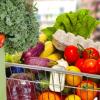‘Food and Nutrition’ contains the compiled information about RIVM tasks, publications and research related to food and nutrition.
What we eat and how our food is produced has a major impact on public health and the environment. RIVM provides the facts and figures on current dietary habits in the Netherlands and their effects on safety, health and sustainability. RIVM also investigates and substantiates initiatives to improve the safety, health and sustainability of our food, taking it to a higher level. Our work on safe, healthy and sustainable food and nutrition is not only carried out in a national but also an international context. RIVM is a partner in international research projects and provides advice for international policies through participation in a wide array of expert groups.
‘Food’ and ‘nutrition’ are not identical synonyms, although they are related. Food safety and sustainability are associated with ‘food’, i.e. food products that are cultivated and produced. The term ‘nutrition’ is about the consumption of food, in other words, what we eat, and how it affects our health. Good nutrition contributes to good physical and physiological health.














